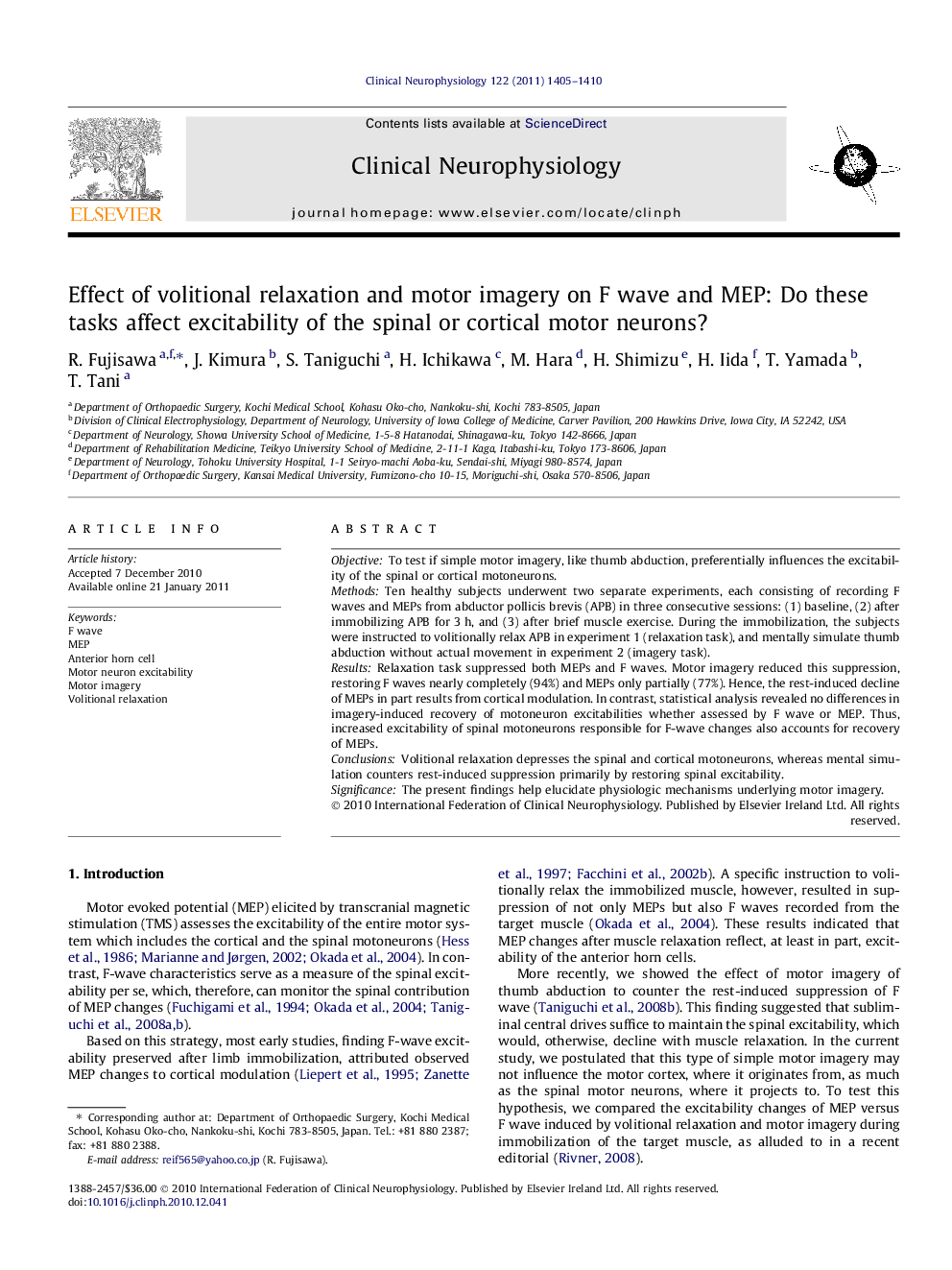| Article ID | Journal | Published Year | Pages | File Type |
|---|---|---|---|---|
| 3044785 | Clinical Neurophysiology | 2011 | 6 Pages |
ObjectiveTo test if simple motor imagery, like thumb abduction, preferentially influences the excitability of the spinal or cortical motoneurons.MethodsTen healthy subjects underwent two separate experiments, each consisting of recording F waves and MEPs from abductor pollicis brevis (APB) in three consecutive sessions: (1) baseline, (2) after immobilizing APB for 3 h, and (3) after brief muscle exercise. During the immobilization, the subjects were instructed to volitionally relax APB in experiment 1 (relaxation task), and mentally simulate thumb abduction without actual movement in experiment 2 (imagery task).ResultsRelaxation task suppressed both MEPs and F waves. Motor imagery reduced this suppression, restoring F waves nearly completely (94%) and MEPs only partially (77%). Hence, the rest-induced decline of MEPs in part results from cortical modulation. In contrast, statistical analysis revealed no differences in imagery-induced recovery of motoneuron excitabilities whether assessed by F wave or MEP. Thus, increased excitability of spinal motoneurons responsible for F-wave changes also accounts for recovery of MEPs.ConclusionsVolitional relaxation depresses the spinal and cortical motoneurons, whereas mental simulation counters rest-induced suppression primarily by restoring spinal excitability.SignificanceThe present findings help elucidate physiologic mechanisms underlying motor imagery.
